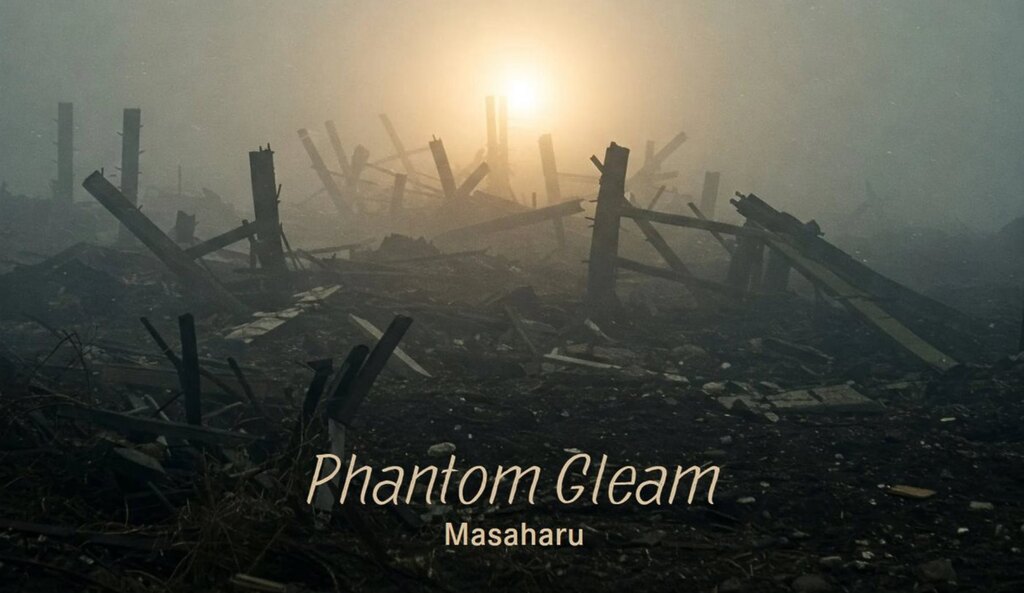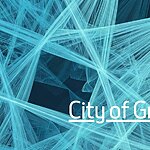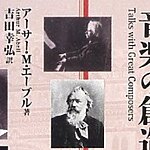The title track, “Phantom Gleam,” progresses as ambiguous drone sounds and effected rhythms are layered multiple times and crossfaded.
To this, as if to symbolize the “gleam” indicated in the title, a shimmering synth sound plays a bright and soaring harmony. However, always in the background lies a group of unconventional rhythms and drone sounds that do not necessarily seek to fully affirm this gleam.
The “gleam” that once illuminated the world fades away like fireworks disappearing in the night sky. What returns to the music’s foreground are rhythms and drone sounds expressing languor, heaviness, and an indescribable anxiety, and the brilliant synth harmony can no longer be received in such a simple way.
While “Phantom Gleam” has moments that evoke power and rhythmic sharpness, what envelops the entire piece might be described as a unique anxiety and tension that unsettles the listener’s heart, like a dull cry emanating from repressed energy.
The artist has stated, “When creating something that symbolizes a person’s inner world, I am interested not in a form that can be captured with simple labeling, but in embodying the multi-faceted, ambiguous, and indistinct state itself.” If the listener feels a sense of what might be called “a certain helplessness or ambivalence,” then that is exactly as the artist intended.
The following track, “Twilight Chant,” creates a world with a unique floating sensation through drone sounds accented by metallic percussion and a chorale by a traditional female choir.
The characteristic female choir is not a polyphony based on counterpoint like in Baroque or Classical choral music, but rather a single melody harmonized with jazz voicings. You can hear that each vocal part, including tension notes, is harmonized in a close-harmony arrangement, producing a sound that is jazzy while maintaining a classical choral form.
According to the artist, this choir part was composed as a standalone piece, then divided and reconfigured into several parts, and finally assembled using a collage technique along with other sound parts like rhythms and drones. One could say it has become a flowing, undulating piece of music that repeats deep breaths in the form of a “call and response between the female choir and a calm 16th-note beat.”
The drone sound, which consistently plays the same sonority like a very simple basso continuo, creates a consonant sound with the choir part for much of the time. Even at other times, it maintains a subtle and delicate relationship of “neither too close nor too far,” creating a rich musical sonority. This can be said to be one of the factors behind this track’s unique floating sensation.
In the third track, “Echoing Solitude,” a low, groaning drone, effected guitars, sound effects, and synth pads call out to each other within a vast space, filling it.
As all sound materials are processed to evoke a sense of vast space, the more the listener concentrates, the more they are made to feel a sense of helplessness, and at the same time, reminded of solitude as indicated in the title. That solitude echoes, quietly advancing and receding.
It is a world that can be compared to the anxiety, fear, and serenity one feels when viewing a painting by Zdzisław Beksiński, giving the impression of being trapped in a “vast, fantastical space where time has stopped.”
This musical space reaches its end as a sound effect, reminiscent of “a fraying of time,” is repeated. This repetition gradually slows and eventually stops. The listener, who had been standing amidst the echoes of helpless solitude, is thus left behind in the silence, where they will likely feel the greatest solitude of all.
All three tracks begin with a heavy, undulating drone sound. In the first two tracks, clear elements such as rhythms, harmonies, and choirs come to the foreground, but in the third track, such elements are not prominent. When listening to the three tracks in succession, the aforementioned characteristics of “Echoing Solitude” are felt even more strongly, and one comes to understand the meaning of its title with a certain spiritual chill.
In this way, while the three tracks may seem different at first glance, it becomes clear that there is a common thread running through them. And the power of this characteristic does not allow the listener to remain in a safe zone, but temporarily pulls them into an uncomfortable place. This might be called “an invitation to a sensory self-dialogue.”


